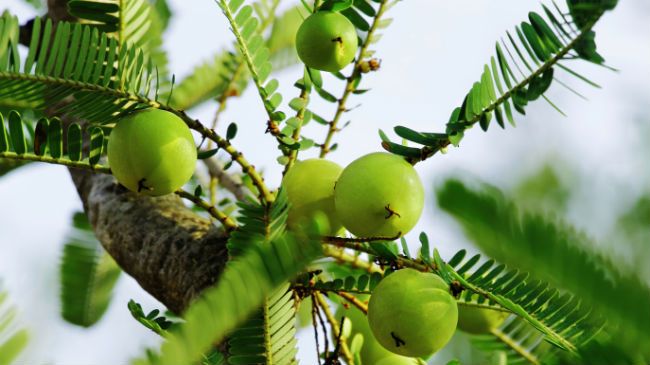Where does it come from?
Among the many botanical based ingredients currently popular in hair care routines, amla is perhaps the one that seems the most mysterious, at least from a chemistry point of view.
Amla is derived from the fruit of the Indian gooseberry or Phyllanthus emblica L., a deciduous tree found in both the tropical and subtropical portions of the Indian and Southeastern Asian countries.
The lemon-sized fruit is greenish yellow with attractive vertical striations and has a bitter, sour, and sweet taste. While amla fruit is primarily composed of water, it also contains a variety of sugars, carbohydrates, protein, fiber, minerals, and contains very high amounts of ascorbic acid (vitamin C”>. For many centuries it has been prized by practitioners of Ayurvedic medicine as well as many other groups for its reportedly amazing medicinal attributes as well as for its beneficial properties for hair and skin.
What does it do?
Advocates who support topical use of amla for hair claim that it is has many uses:
- cleansing agent
- deep conditioning treatment
- dandruff remedy
- prevents graying of hair
- darkens hair without use of dyes
- imparts shine
- improves hair growth
Too good to be true?
It certainly sounds too good to be true. What exactly is in the amla that is sold for domestic use? Does its composition and chemistry lend any credibility to the many bold claims?
Unless you are fortunate to have access to the fresh fruit, amla is generally available as either a powder or oil. The light brown powder is obtained by drying the entire fruit and grinding it into a powder. The amla oil is actually made by soaking the dried fruit in another oil such as coconut, sesame seed, and sometimes mineral oil. Some of the components of the dried fruit seep into the carrier oil, which is filtered to remove the bits of fruit prior to market. This means that most amla oil products being sold are actually more of a botanical infusion of amla in coconut, sesame, or mineral oil. Although it is possible to extract the fatty acids from the seeds of the amla fruit in the same manner as they are extracted from coconuts, avocados, shea nuts, and argan fruit, it has not been the traditional manner of using this fruit.

